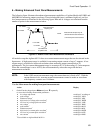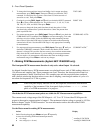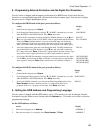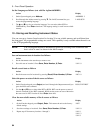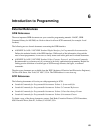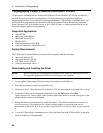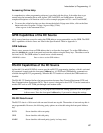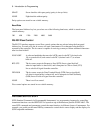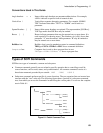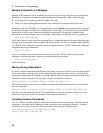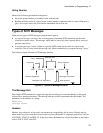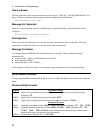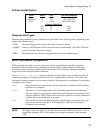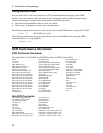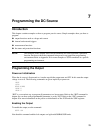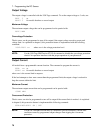
Introduction to Programming - 6
69
Conventions Used in This Guide
Angle brackets < > Items within angle brackets are parameter abbreviations. For example,
<NR1> indicates a specific form of numerical data.
Vertical bar | Vertical bars separate alternative parameters. For example, NORM |
TEXT indicates that either "TEXT" or "NORM" can be used as a
parameter.
Square Brackets [ ] Items within square brackets are optional. The representation [SOURce:].
VOLTage means that SOURce: may be omitted.
Braces { } Braces indicate parameters that may be repeated zero or more times. It is
used especially for showing arrays. The notation <A>{<,B>} shows that
parameter "A" must be entered, while parameter "B" may be omitted or
may be entered one or more times.
Boldface font
Boldface font is used to emphasize syntax in command definitions.
TRIGger:COUNt:CURRent <NRf> shows command definition.
Computer font Computer font is used to show program lines in text.
TRIGger:COUNt:CURRent 10 shows a program line.
Types of SCPI Commands
SCPI has two types of commands, common and subsystem.
♦ Common commands generally are not related to specific operation but to controlling overall dc
source functions, such as reset, status, and synchronization. All common commands consist of a
three-letter mnemonic preceded by an asterisk: *RST *IDN? *SRE 8
♦ Subsystem commands perform specific dc source functions. They are organized into an inverted tree
structure with the "root" at the top. The following figure shows a portion of a subsystem command
tree, from which you access the commands located along the various paths. You can see the complete
tree in Table 8-1.
:OUTPut
[
:STATe
]
:DFI
:PROTection
ROOT
:CLEar
:DELa
y
:STATus
:CONDition?
:OPERation
[
:EVEN
]
?
[
:STATe
]
:SOURce
:PON
:STATe
Figure 6-1. Partial Command Tree



